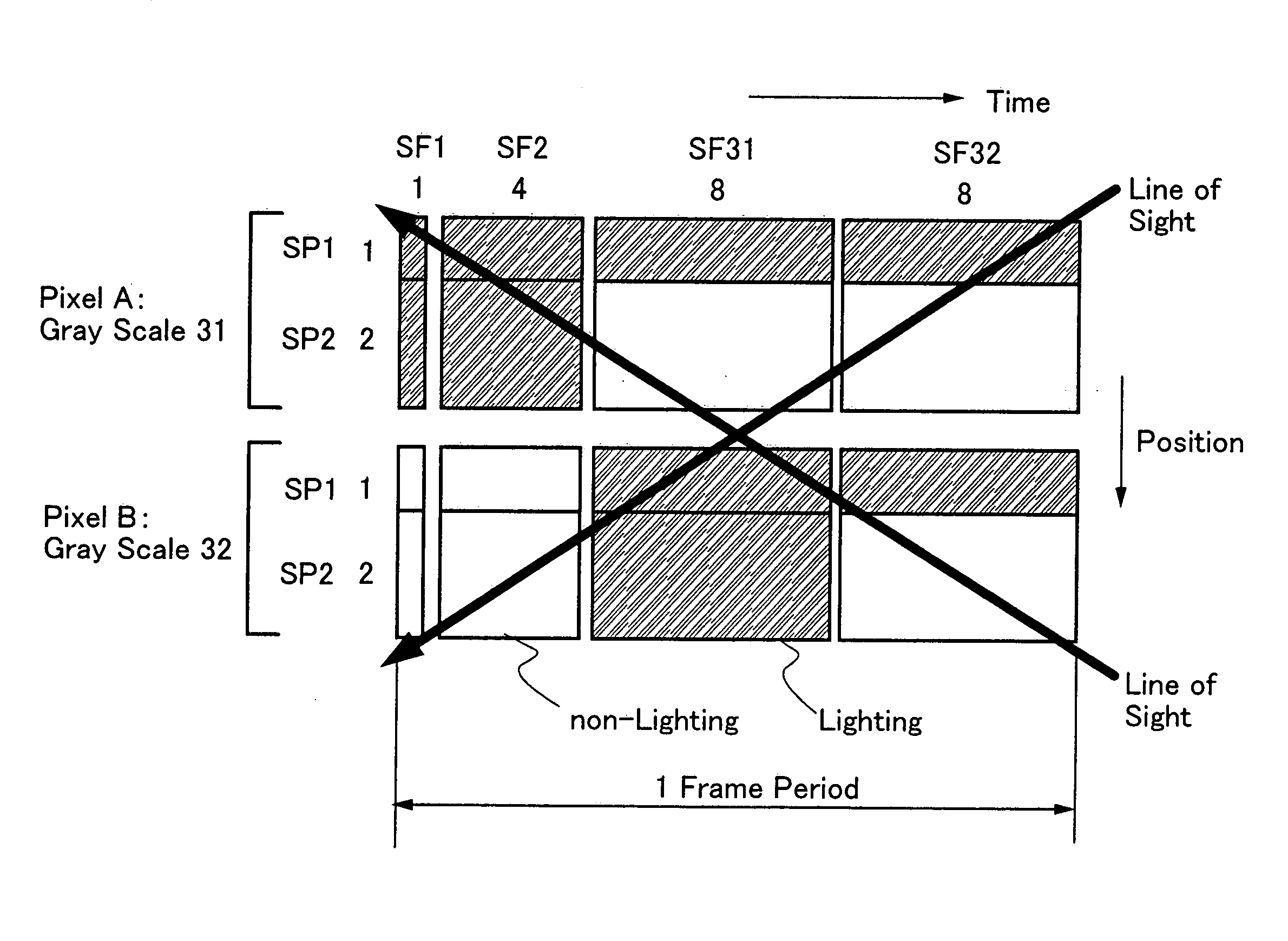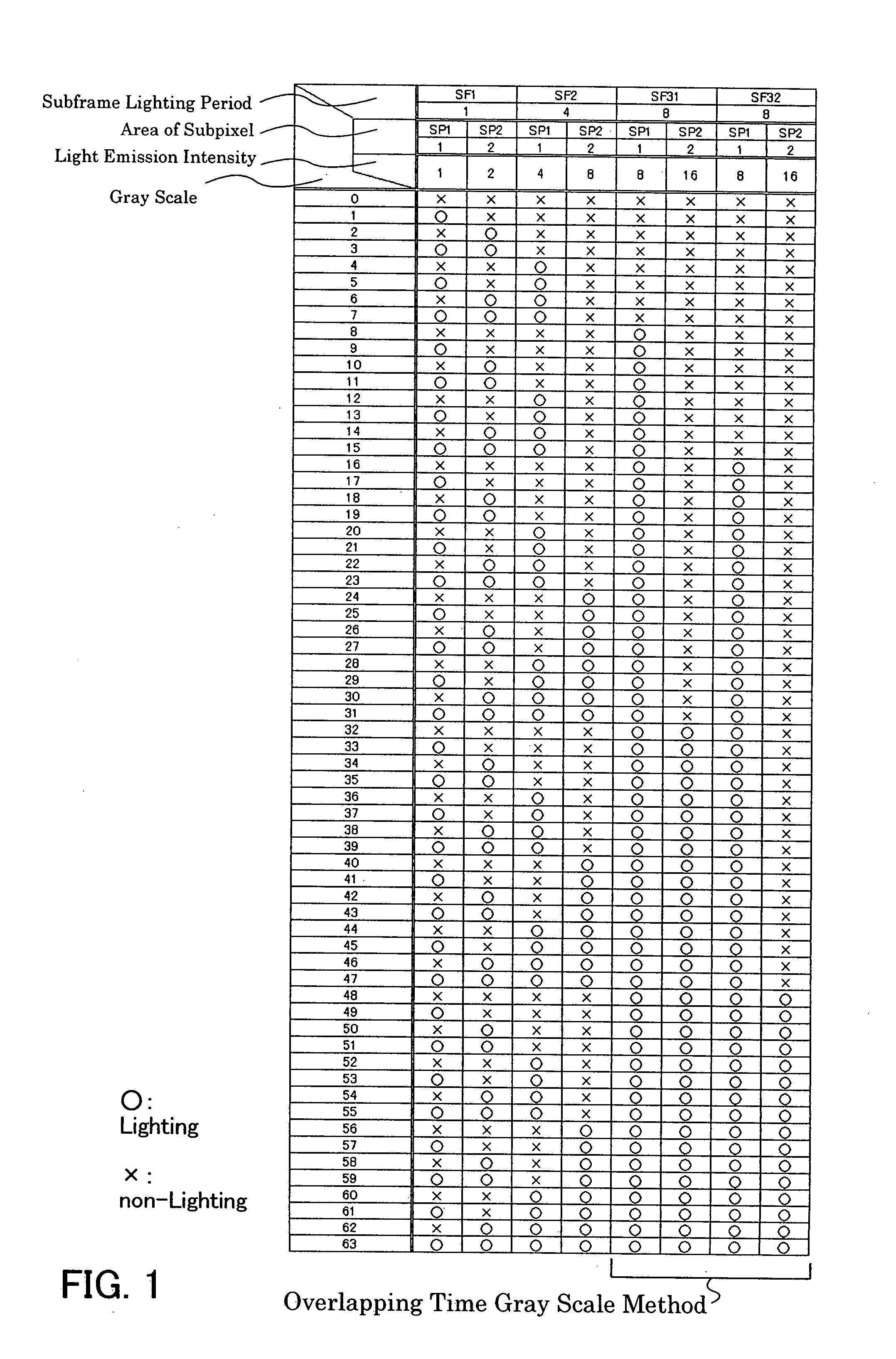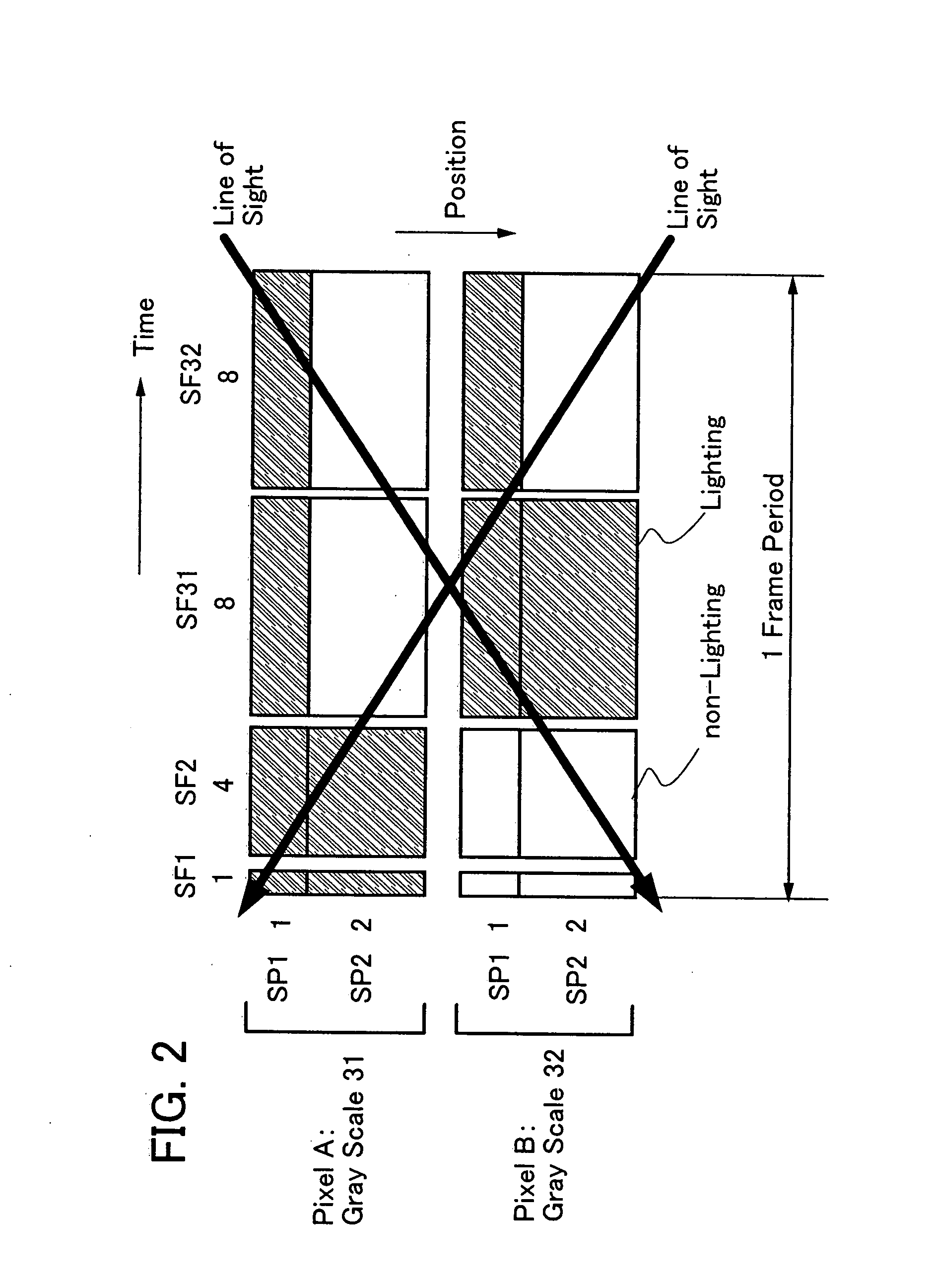Display device, driving method of display device, and electronic appliance
a display device and driving method technology, applied in semiconductor devices, instruments, computing, etc., can solve the problems of insufficient suppression of image quality degradation, and achieve the effects of improving display quality, clear image, and reducing pseudo contour
- Summary
- Abstract
- Description
- Claims
- Application Information
AI Technical Summary
Benefits of technology
Problems solved by technology
Method used
Image
Examples
embodiment mode 1
[0124]In this embodiment mode, an example where a driving method of the invention is applied to a case of 6-bit display (64 gray scales) is described.
[0125]A driving method according to this embodiment mode is a driving method using a combination of an area gray scale method in which one pixel is divided into a plurality of subpixels and a gray scale is expressed by control of the number or the area of lighting subpixels; and a time gray scale method in which one frame is divided into a plurality of subframes, each subframe is weighted with respect to the frequency of light emission, a light emitting period, or the like, and then the total weight is differentiated for each gray scale level, thereby expressing a gray scale. That is, one pixel is divided into m subpixels (m is an integer of m≧2). In the m subpixels, the area of the (s+1)th subpixel (1≦s≦m−1) is twice the area of the s-th subpixel, in other words, a ratio of the area of the s-th subpixel to the area of the (s+1)th subp...
embodiment mode 2
[0230]In Embodiment Mode 1, a case where a lighting period increases in linear proportion to the increase of a gray scale level is described. In this embodiment mode, a case where gamma correction is performed is described.
[0231]Gamma correction is referred to a method by which a lighting period increases nonlinearly as a gray scale level increases. Human eyes cannot sense that luminance increases in proportion even when luminance increases in linear proportion. As luminance increases, difference of brightness is less visible to human eyes. Therefore, in order to sense the difference of brightness by human eyes, it is necessary to increase a lighting period as a gray scale level increases, that is, gamma correction is necessary to be performed. When a gray scale level is represented by x and luminance is represented by y, a relation between the luminance and the gray scale level is expressed by Formula 1.
[Formula 1]y=Axγ (1)
[0232]Note that in Formula 1, A is a constant for normaliz...
embodiment mode 3
[0245]In Embodiment Mode 1, the overlapping time gray scale method is applied to subframes of which light emission intensity is the same in each subpixel; however, the invention is not limited thereto. In this embodiment mode, a case is described, in which the overlapping time gray scale method is applied to all subframes in each subpixel.
[0246]In this embodiment mode, a case is described, in which one pixel is divided into two subpixels (SP1 and SP2) each having the same area; and one frame is divided into eight subframes (SF1 to SF8) each having the same lighting period. FIG. 32 shows a selection method of a subpixel and a subframe in this case.
[0247]Here, the subpixels have the following areas: SP1=SP2=1, and the subframes have the following lighting periods: SF1=SF2=SF3=SF4=SF5=SF6=SF7=SF8=1.
[0248]In FIG. 32, since the area of each subpixel is the same and the lighting period of each subframe is the same, light emission intensity is equal in all the subpixels and in all the subf...
PUM
 Login to View More
Login to View More Abstract
Description
Claims
Application Information
 Login to View More
Login to View More - R&D
- Intellectual Property
- Life Sciences
- Materials
- Tech Scout
- Unparalleled Data Quality
- Higher Quality Content
- 60% Fewer Hallucinations
Browse by: Latest US Patents, China's latest patents, Technical Efficacy Thesaurus, Application Domain, Technology Topic, Popular Technical Reports.
© 2025 PatSnap. All rights reserved.Legal|Privacy policy|Modern Slavery Act Transparency Statement|Sitemap|About US| Contact US: help@patsnap.com



